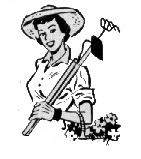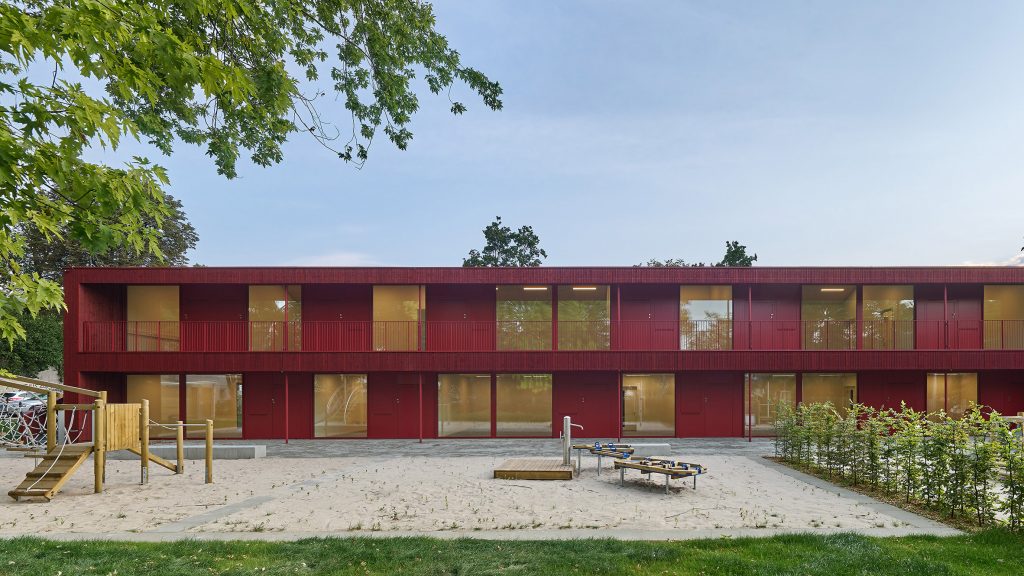
June Gardening tasks you should perform this month if you live in the Northern Hemisphere. Each gardening zone has different requirements as the season gets warmer. If you don’t know your gardening zone, you can look it up via zip code on the Gardening Zone Page. If you live in the Southern Hemisphere, add six months to find your gardening tasks.
Zone 1
- Plant lettuce seedlings at intervals of every few weeks
- Prune and thin out spring-flowering shrubs after bloom is finished
- After their leaves yellow and dry up, divide and transplant spring bulbs
- Set out groundcover plants and start lawns
- Fertilize established lawns
- Consider container planting for warmth-loving vegetables (eggplant, tomatoes, peppers)
- Continue to protect tomato seedlings, especially during cold nights
- Start perennials from seed by sowing in the ground
- Heat up new compost piles by adding garden soil and compost activator
- Remove faded flowers from cool-weather annuals to prolong their bloom season
- Transplant warm-season vegetable seedlings; give them a warm start by planting through mulches of thick plastic
- Set out cool-weather herbs such as chives and parsley
Zone 2
- Apply sulfur to control fungus problems on apple trees, roses and grapevines
- Set out seedlings of warm-season annuals and vegetables
- Activate and stir compost piles weekly
- Plant summer-flowering bulbs
- Pinch off first flower buds on chrysanthemum and carnation plants to coax bigger blooms
- Set out cool-weather herbs such as chives and parsley
- After their leaves yellow and dry up, divide and transplant crowded spring bulbs
- Plant groundcovers
- Fertilize and aerate established lawns
- Divide and transplant spring-blooming perennials after they flower
- Fertilize, prune and thin out spring-flowering shrubs
- Plant balled-and-burlapped and container trees, shrubs and vines
Zone 3
- Set out seedlings of warm-season annuals and vegetables
- Plant summer-flowering bulbs
- Weed asparagus and strawberry beds
- Put up trellises or netting for peas, pole beans and flowering vines
- Divide and replant spring-blooming perennials after the flowers fade
- Plant container roses
- Fertilize and aerate lawns
- Plant balled-and-burlapped and container trees, shrubs and vines
- Apply sulfur to control fungus problems on apple trees, roses and grapevines
- Pinch off first flower buds on chrysanthemum and carnation plants to coax bigger blooms
- Protect cole crops (cabbage, broccoli, kale) from egg-laying cabbage white butterflies with insect barrier cloth
- After their leaves yellow and dry up, divide and transplant crowded spring bulbs
Zone 4
- Plant seedlings of warm-season annuals and vegetables
- Sow seed of fast-growing, heat-loving herbs, vegetables (basil, squash, melons) and flowers (nasturtiums, zinnias) directly in ground
- Thin out small green fruits on apple, peach and plum trees to one every 6 inches on the branch
- Dust potato plants to prevent infestations of potato beetle
- Set up trellises to support pole beans, morning glories and cucumbers
- Remove newest shoots from geranium plants to encourage fuller plants
- Plant new lawns and fertilize and aerate established lawns
- Plant container roses, shrubs and trees in well-amended soil
- Divide and transplant spring-flowering perennials that have finished blooming
- Protect cole crops (cabbage, broccoli, kale) from egg-laying cabbage white butterflies with insect-barrier cloth
- Weed asparagus and strawberry beds
- Remove new flower buds from chrysanthemums and carnations to coax bigger blooms
Zone 5
- Divide and transplant spring-flowering perennials that have finished blooming
- Harden off and plant seedlings of warm-weather vegetables and flowers
- Thin out small green fruits on apple, peach and plum trees to one every 6 inches on the branch
- Sow seeds of perennials directly into the ground
- Dust potato plants to prevent infestations of potato beetle
- Pinch newest shoots on geranium plants to encourage fuller plants
- Train your lawn to grow deep roots; Mow often, at a high setting
- Plant balled-and-burlapped and container shrubs and trees
- Feed roses as the first flower buds appear; apply fungicide to prevent powdery mildew or blackspot
- Weed asparagus and strawberry beds
- Feed young corn plants with high-nitrogen fish emulsion fertilizer
- Mulch flower and vegetable gardens to conserve water during heatwaves
Zone 6
- Prune vines (spring-blooming clematis and wisteria) after they’ve flowered
- Remove spent flowers from spring annuals on stretching the blooming season
- Mulch flower and vegetable gardens to conserve water during hot spells
- Plant fall-blooming perennials now
- Thin out small green fruits on apple, peach and plum trees to one every 6 inches on the branch
- Sow seeds of perennials directly into the ground
- Harden off and plant seedlings of warm-weather vegetables and flowers
- Prune once-blooming roses after they’ve flowered
- Continue to spray peach and apple trees to control fungal diseases
- Plant balled-and-burlapped and container shrubs and trees
- Lightly prune tips of blackberries and pinch flowers off young grapevines to form and train growth of new canes
- Fertilize and prune azaleas, lilacs, spirea and rhododendrons after they bloom
Zone 7
- Replace mulch and aerate soil in permanent potted gardens
- Remove spent flowers from spring annuals to stretch the blooming season
- Plant fall-blooming perennials now
- Prune once-blooming roses after they’ve flowered this month
- Trim back vines (spring-blooming clematis and wisteria) after they bloom
- Begin feeding vegetable plants as they start to flower
- Continue to spray peach and apple trees to control fungal diseases
- Plant balled-and-burlapped and container shrubs and trees
- Lightly prune tips of blackberries and pinch flowers off young grapevines to form and train growth of new canes
- Set out seedlings of warm-weather vegetables and annuals
- Sow seeds of heat-loving vegetables (squash, pumpkins, melons)directly into the ground
- Continue to fertilize roses and treat with fungicide as needed
Zone 8
- Pinch off flower buds to promote leafier basil plants
- Fertilize vegetable plants as they begin to bloom
- Lightly prune tips of blackberries and pinch flowers off young grapevines to form and train growth of new canes
- Take cuttings from your favorite shrubs when the branch wood hardens slightly
- Plant seedlings of heat-loving vegetables such as melons, peppers and pumpkins for fall harvests
- Set out seedlings of late-summer flowering annuals
- Add a layer of mulch (2-3 inches) around newly planted trees and shrubs
- Cut back and thin out diseased or spindly branches of spring-flowering shrubs
- Prune once-blooming roses after they’ve flowered this month
- Fill flower garden gaps with larger sizes of summer-blooming annuals
- Replace mulch and aerate soil in permanent potted gardens
- Plant fall-blooming perennials now
Zone 9
- Deep water alkaline-sensitive trees, including Japanese maple and saucer magnolias, and apply an acid fertilizer to prevent alkaline burn
- Replace mulch and aerate soil of potted plantings
- Deep soak and fertilize fig and avocado trees; mulch heavily to protect shallow roots
- Protect trunks of young trees, especially citrus, from sunscald with tree wrap or white latex paint
- Take cuttings from your favorite shrubs when the branch wood hardens slightly
- Remove bloomed-out spikes from salvias, pentas and penstemons to prolong their bloom
- Set out shallow dishes of water and overripe fruit to attract butterflies
- Plant seedlings of heat-loving vegetables such as melons, peppers and pumpkins for fall harvests
- Set out seedlings of late-summer flowering annuals
- Add a layer of mulch (2-3 inches) around newly planted trees and shrubs
- Spray wilting fuchsias with water and monitor for signs of fuchsia mite
- Pinch off flower buds to promote leafier basil plants
Zone 10
- Continue to fertilize summer annuals to encourage bursts of bloom
- Plant gladioli bulbs every few weeks for successive cut flowers through the summer
- Harvest vegetables as soon as they reach optimum size
- Make maximum use of scarce water by drip irrigating, watering early in the day and planting in water-needs zones
- Trim bloomed-out spikes from salvias, pentas and penstemons to prolong their bloom
- Remove withered blooms from crape myrtles to spur new flower formation
- Keep caladiums and coleus in high color by pinching off faded leaves, applying an all-purpose fertilizer and watering consistently
- Apply beneficial nematodes now to destroy ground-dwelling Japanese beetle grubs
- Give roses one last feeding for the summer
- Check moisture levels of potted gardens and new transplants
- If holes appear in geraniums or petunias, control budworm with use diatomaceous earth to control earwig damage in dahlias
- Protect trunks of young trees, especially citrus, from sunscald with tree wrap or white latex paint
Zone 11
- Plant gladioli bulbs every few weeks for successive cut flowers through the summer
- If holes appear in geraniums or petunias, control budworm with the use diatomaceous earth to control earwig damage in dahlias
- Harvest vegetables as soon as they reach optimum size
- Watch plants for signs of stress (wilting, sunscald) and irrigate as needed with long, deep soaks
- Apply beneficial nematodes now to destroy ground-dwelling grubs of Japanese beetles
- Give roses one last feeding for the summer
- Check moisture levels of potted gardens and new transplants
- Make maximum use of scarce water by drip irrigating, watering early in the day and planting in water-needs zones
- Protect trunks of young trees, especially citrus, from sunscald with tree wrap or white latex paint
- Set out shallow dishes of water and overripe fruit to attract butterflies
- Keep caladiums and coleus in high color by pinching off faded leaves, applying an all-purpose fertilizer and watering consistently
- Deepwater palm trees and treat with chelated iron if new foliage is pale or yellowed












